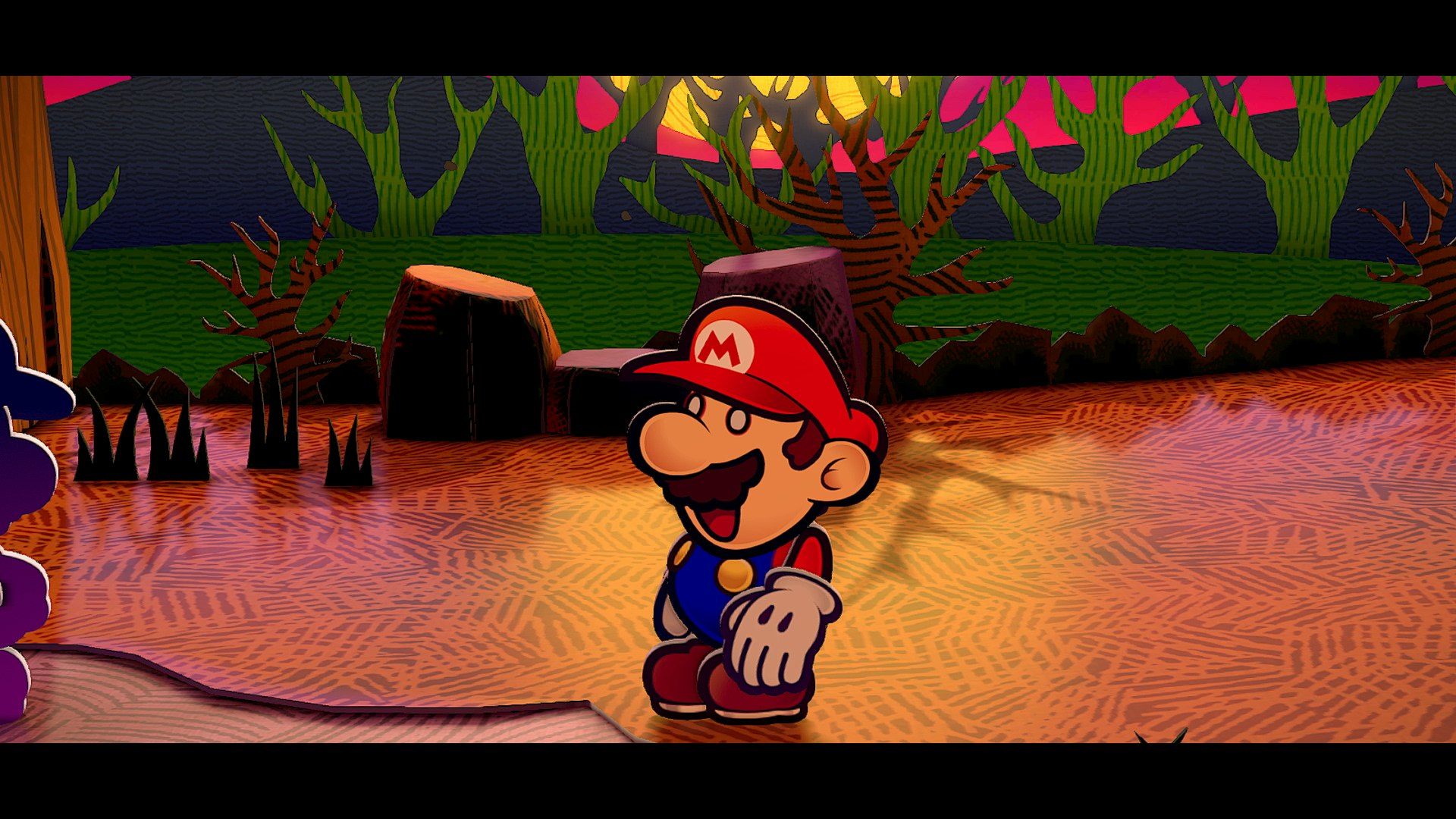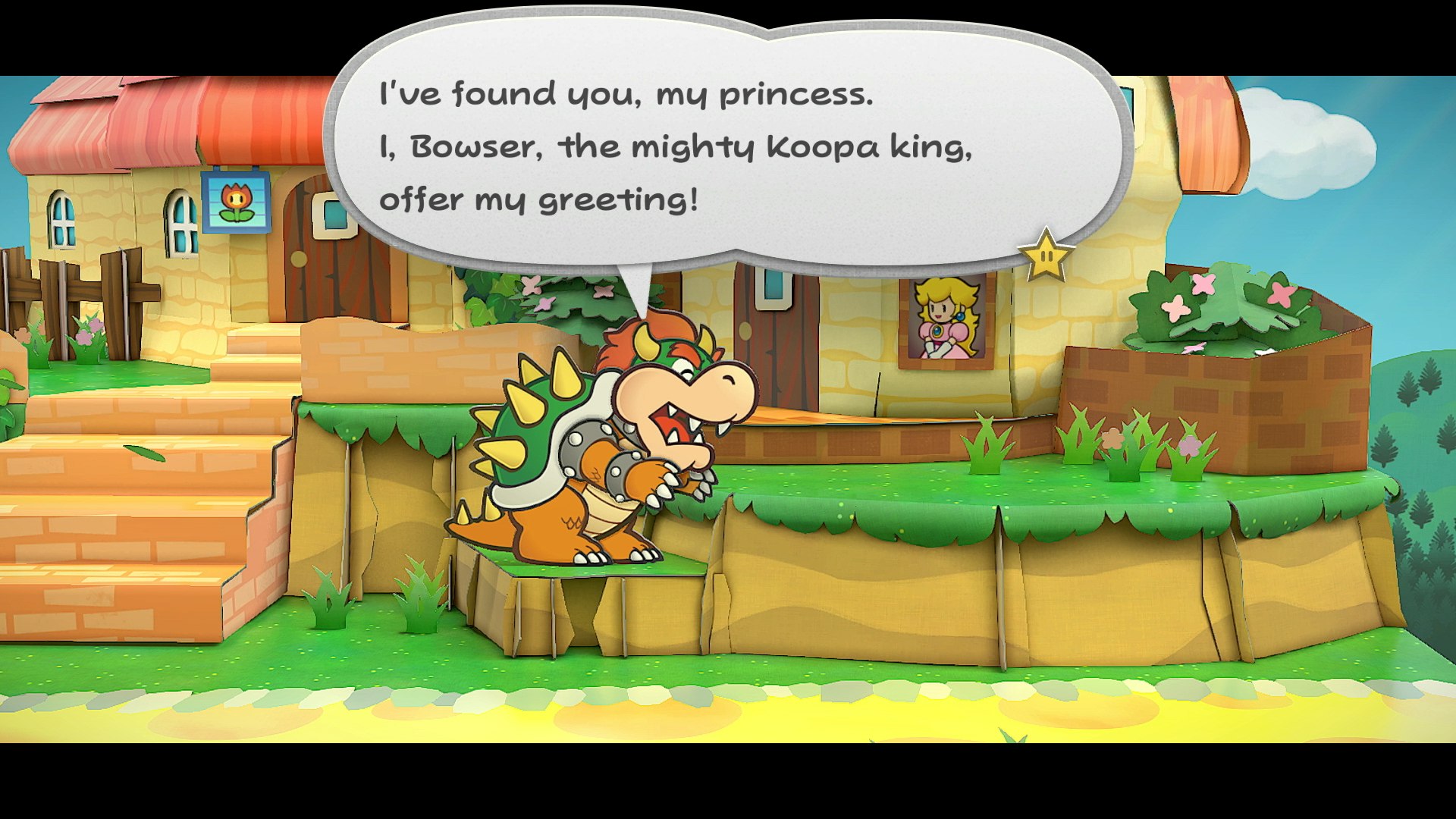Paper Mario: The Thousand-Year Door
Platform: Switch Mario isn’t just the world’s bounciest plumber –...

Platform: Switch
Mario isn't just the world's bounciest plumber – he's also got a strong background in world-saving via the noble medium of turn-based battles. It's a lineage Nintendo has been keen to remind players of in recent months, first with the November '23 remake of SNES classic Super Mario RPG, and now with the GameCube's The Thousand-Year Door getting a glow up.
Originally released back in 2001, The Thousand-Year Door was always a refreshing twist on the Mario series' tropes and conventions. Take Princess Peach: well, someone has. She's been kidnapped yet again, but this time it's not by Bowser but instead new villains the X-Nauts, searching for the eponymous door, long-buried beneath the town of Rogueport, and the seven Crystal Stars that will let them open it. With Peach managing to send a magical map to Mario before being absconded with, he's off on a globe-trotting journey to all-new locations to find the Stars first, stop the X-Nauts and their leader Sir Grodus, and prevent them from unleashing whatever lies locked behind the ominous portal.

It's livened up further with clever intermissions between each chapter where players check in on Peach mid-kidnapping, then play as a rampaging Bowser, absolutely livid that someone else has nabbed Peach. The game is crammed with smart character touches like this, moments that only really work in these more story-focused outings, adding to The Thousand-Year Door's delights.
In 2024, it remains a game packed with charm, in large part due to its ingenious papercraft aesthetic. First introduced in the N64's original Paper Mario, the visual approach allows for a world built as a pop-up storybook, each area a diorama where secrets may be hidden quite literally between the folds. Similarly, it roots this 2D Mario's abilities in his capacity to be folded up origami-style into paper planes or boats to reach new areas, or rotate ninety degrees to slip through gaps. Combined, they force players to think smartly about depth and perspective in ways only possible in this branch of Mario's RPG adventures.
Nintendo invites newcomers to experience what returning GameCube owners already know is one of Mario's finest adventures.
Along the way, Mario is joined by an assortment of partners drawn from the wider series' lore, each with unique skills for use in and out of battle. For instance, Goombella the Goomba (one of those walking mushrooms you're normally squishing in Super Mario games) can scan enemies in battle to reveal weaknesses, or give hints towards your next objective when exploring the overworld, while Admiral Bobbery, a decorated Bob-omb sailor, can blow up foes or burst through obstacles. Between partner abilities and Mario's own, The Thousand-Year Door is able to deviate slightly from the turn-based RPG formula, taking on elements of Metroidvania games, allowing you to return to previously visited areas to oh-so-satisfyingly access secrets you'll have long been able to see, but not reach.
In many ways, that exploration side of the game is the most enjoyable, too. While The Thousand-Year Door's turn-based battles are far from boring thanks to a reactive, real-time prompt system that allows players to power up every attack or reduce damage taken, they can feel repetitive. Every enemy falls into one of two camps – those that can be jumped on, or those with some form of spike that must be tackled with a hammer strike instead. Although there's a bounty of collectible badges to equip Mario with, offering more varied hammer or jump attacks – ones that will hit more than one enemy, or add an elemental effect, for instance – they don't make things much more interesting. There's even one badge that negates damage from jumping on spiked enemies entirely, rendering combat even more simplistic.

Thankfully, Mario is always joined in battle by one of his new friends, and their abilities serve to liven things up a bit. Each of their skills will have a different set of inputs you'll need to pull off perfectly for maximum effect, and only having one ally to hand at a time forces you to think carefully as to when to swap them out, or whose powers are best suited to tackling the current enemies. Then there's that trademark Nintendo charm at work throughout battles – every fight takes place on a stage, with an ever-expanding audience watching from the stalls. Flashier performances draw in more viewers, their cheers refilling Mario's star gauge for special moves – but enemies might also sneak in, pelting the 'performers' with rocks or garbage if you don't react in time to stop them. Even your own attacks might cause the stage to collapse, dealing additional damage to everyone. It's tricks like these that keep Paper Mario's combat encounters interesting, even when the central hero's attacks can be staid and dull.
That's essentially how it was in the game's original form though, and "if it ain't broke, don't fix it" seems to be the maxim of this remaster. It's nowhere near as much of an overhaul as Super Mario RPG got, but then it never needed much doing to it – a testament to how well the GameCube handled the distinctive art style in the first place. Here, the most striking visual update is just a hint of added depth to character models to better sell the papercraft style – everyone really looks like a cardboard puppet, especially when rotated side-on to show the edge of card – while improved lighting effects makes everything really pop. Oddly, it only runs at 30 frames per second now, when the GameCube managed 60, but it all still looks lovely.
Elsewhere, improvements are largely restricted to the quality of life department. There's now a quick-switch tool to easily swap between partners, allowing swift access to their abilities; an expanded fast travel network to return to completed areas and hunt down collectibles; and a new supporting character called the Battle Master to practice all those timing-critical special moves on. Music has been rearranged (though purists can hunt down a badge that allows you to revert to the original GameCube recordings), and there's an expansive gallery of concept art and music to unlock.
Nice additions all, but nothing that dramatically changes the experience – but thankfully that experience remains a delightful one. In re-opening The Thousand-Year Door, Nintendo invites newcomers to experience what returning GameCube owners already know is one of Mario's finest adventures.
What's Your Reaction?























